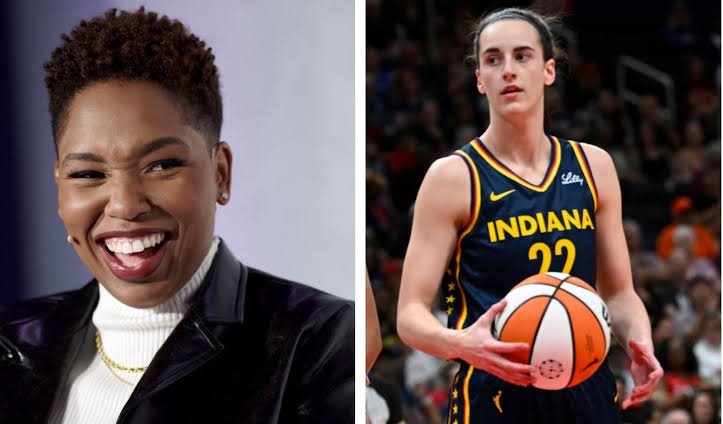
Caitlin Clark, the dynamic Indiana Fever star, has sparked widespread attention for her impressive basketball abilities. Yet, as often happens with figures in the public eye, discussions about her rise to fame are not limited to just her talent. Recently, ESPN’s Monica McNutt spoke on BBC News, reflecting on Clark’s appeal, which, according to McNutt, may be partly attributed to her race. McNutt mentioned the vast number of young girls who showed up to watch Clark play, suggesting that Clark’s status as “a white girl from the middle of America” might explain why she resonated so deeply with a wide audience.
While McNutt was careful to acknowledge Clark’s exceptional skills, she pointed out that for some fans, the connection to Clark’s race played a significant role in her popularity. McNutt explained that, for many people, Clark symbolized something larger, even if that connection wasn’t necessarily rooted in the athlete’s own identity or views. She emphasized that fans often form attachments to public figures based on a mix of factors, some of which may not be entirely based on objective qualities like performance or character. McNutt’s comments drew a parallel to Angel Reese, another popular figure in women’s basketball, who, while highly respected for her athleticism, might also attract fans for reasons beyond her on-court achievements.
McNutt’s remarks sparked a wave of criticism from some observers, who felt that her focus on race was unnecessary and detracted from Clark’s remarkable accomplishments. It is true that the 23-year-old’s career is distinguished not only by her incredible on-court skills—such as leading the league in assists during her rookie season and earning a spot on the All-WNBA First Team—but also by the widespread media attention she has received. The scrutiny around McNutt’s comments highlights the complex nature of fandom and how athletes are often viewed through the lens of identity, not just their performance.
While it’s undeniable that race plays a role in shaping public perceptions of athletes, many felt that McNutt’s analysis might have oversimplified Clark’s widespread appeal. Clark herself has acknowledged the advantages she has had as a white athlete in a sport that has historically been dominated by Black players, but it is equally important to remember her groundbreaking accomplishments and how they have earned her admiration across racial and cultural lines.
Ultimately, McNutt’s interview underscores a larger, ongoing conversation about race, identity, and the narratives that shape sports fandom. While Clark’s rise can certainly be seen as a reflection of her immense skill and hard work, it’s clear that her popularity also intersects with broader societal conversations about race, representation, and the ways in which people connect with their sports heroes.



